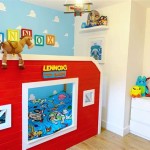How To Decorate Your New Office at Work
A new office space presents a blank canvas for creating a productive and personalized work environment. Careful consideration of the available space, personal work style, and company culture can result in an office that fosters both creativity and efficiency. This article provides a comprehensive guide to decorating a new office, focusing on key elements that contribute to a positive and professional workspace.
Ergonomics and Functionality
Before focusing on aesthetics, prioritizing ergonomics and functionality is crucial. An uncomfortable workspace can lead to decreased productivity and potential health issues. Begin by selecting a chair that offers proper lumbar support and adjustability. Ensure the desk is at a comfortable height for typing and that the monitor is positioned at eye level to prevent neck strain. Adequate lighting is also essential. Combine overhead lighting with a desk lamp to minimize eye fatigue and create a well-lit work area. Consider the placement of frequently used items, like printers and filing cabinets, to minimize unnecessary movement and maximize efficiency.
Cable management is often overlooked but plays a significant role in maintaining a tidy and functional workspace. Use cable ties, clips, or organizers to keep cords neatly bundled and out of sight. This not only improves the aesthetics of the office but also prevents tripping hazards and makes cleaning easier. Consider investing in a wireless keyboard and mouse to further reduce clutter and improve desk space utilization.
Personalization and Aesthetics
Once the functional aspects of the office are addressed, personalization can enhance the workspace and reflect individual style. Adding personal touches, while maintaining professionalism, contributes to a more comfortable and engaging environment. Introduce elements that inspire creativity and reflect personal interests, such as artwork, photographs, or plants. However, it's important to maintain a balance and avoid excessive clutter. A cluttered workspace can be distracting and negatively impact productivity.
Choose a cohesive color scheme that complements the existing office environment while reflecting personal preferences. Neutral colors, such as beiges, grays, and soft blues, create a calming and professional atmosphere. Introduce pops of color with accessories or artwork to add personality without overwhelming the space. Consider the impact of natural light when choosing colors, as darker shades can make a space feel smaller and less inviting. If the office receives limited natural light, opt for lighter colors to brighten the area.
Incorporating natural elements, such as plants, can significantly enhance the office environment. Studies have shown that plants can improve air quality, reduce stress, and boost creativity. Choose low-maintenance plants that thrive in indoor environments, such as snake plants, ZZ plants, or spider plants. If space allows, a small potted tree can add a touch of nature and create a more welcoming atmosphere. Be mindful of allergies when selecting plants and ensure they are appropriately sized for the available space.
Storage and Organization
Effective storage solutions are essential for maintaining a clutter-free and productive workspace. Utilize a combination of vertical and horizontal storage options to maximize space and keep items organized. Shelving units, drawers, and filing cabinets can accommodate various office supplies and documents. Invest in desk organizers to keep smaller items, such as pens, pencils, and paperclips, neatly arranged and easily accessible. Labeling storage containers and drawers can significantly improve efficiency and reduce time spent searching for specific items.
Regular decluttering is crucial for maintaining an organized workspace. Implement a system for regularly reviewing and discarding unnecessary papers and items. Utilize digital storage solutions whenever possible to minimize paper clutter. A clean and organized workspace promotes focus and reduces distractions, leading to increased productivity and a more positive work experience.
Consider the placement of storage solutions in relation to the workflow. Frequently used items should be stored within easy reach, while less frequently accessed items can be stored in less accessible areas. Optimizing storage placement can significantly improve efficiency and contribute to a more streamlined workflow. Prioritizing organization from the outset will create a foundation for a consistently productive and enjoyable workspace.

4 Ideas For Decorating Your Workspace

Decorate Your Office At Work Home Design Wall Colors Best

Cubicle Decor Ideas To Improve Your Work Environment

68 Cubicle Decor Ideas To Liven Up Your Office Space Work Desk

How To Decorate A Corporate Office

Do You Decorate Your Cubicle Or Office For The Holidays

12 Office Decor Ideas For Work To Make The Space Yours

How To Decorate A Corporate Office

25 Fresh Home Office Decor Ideas For Working From In 2025

Michael S Calm Contemporary Workspace Nbf Work Office Decor Small







